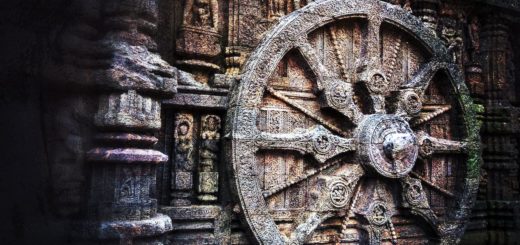Egyptian Pharaohs: Dynasties and Reigns

Hey there, amazing readers! 🖐️ Just a quick note: yes, we know there are a lot of ads here. Trust us, we get it—it’s not the prettiest look, but they help us keep this blog alive and kicking. Those pesky little ads cover the costs of all the behind-the-scenes magic, from hosting and tech stuff to creating content we hope you’ll love.
We’re committed to delivering quality posts, and your support (even just sticking around despite the ads) means everything to us. So, bear with us, and thanks for helping us keep the good vibes rolling. Now, on to the fun stuff! 😉
TRANSLATE BUTTON AT THE END OF THE ARTICLE
Introduction to Egyptian Pharaohs
To delve into the world of Egyptian Pharaohs is to explore a rich tapestry of history, power, and mystique.
The Pharaohs, regarded as divine rulers, held absolute authority over ancient Egypt for thousands of years.
These iconic figures were not only political leaders but also religious figures, believed to be the intermediaries between the gods and the people.
The Pharaohs ruled over a vast and prosperous civilization, leaving behind awe-inspiring monuments, intricate tombs, and a legacy that continues to captivate the world today.
Early Dynastic Period: 3100-2686 BC
The Early Dynastic Period marked the dawn of Egypt’s dynastic rule, with the unification of Upper and Lower Egypt under King Narmer in 3100 BC.
This period saw the establishment of the first Egyptian dynasties, paving the way for the divine kingship that would define Egyptian society for millennia.
Pharaohs of this era, such as Djoser and Sneferu, initiated monumental building projects and established the foundations of Egyptian civilization.
Old Kingdom: 2686-2181 BC
The Old Kingdom is often referred to as the "Age of the Pyramids," characterized by the construction of iconic pyramids at Giza, including the Great Pyramid of Khufu.
Pharaohs of the Fourth Dynasty, such as Khufu, Khafre, and Menkaure, oversaw the building of these massive structures that would stand as testaments to their power and eternal life.
The Old Kingdom also saw the development of a centralized bureaucracy and elaborate funerary practices.
First Intermediate Period: 2181-2055 BC
The First Intermediate Period was a time of political upheaval and decentralization, marked by the weakening of central authority and the rise of regional rulers known as nomarchs.
Pharaohs of this period struggled to maintain control over the fragmented kingdom, leading to a decline in royal power and a period of social unrest.
The First Intermediate Period laid the groundwork for the reunification of Egypt under the Middle Kingdom.
Middle Kingdom: 2055-1650 BC
The Middle Kingdom is often considered a period of cultural renaissance and political stability.
Pharaohs such as Mentuhotep II and Senusret III undertook extensive building projects, expanded trade networks, and promoted literature and the arts.
The Middle Kingdom saw the emergence of a more humane form of kingship, with Pharaohs portrayed as benevolent rulers who cared for their subjects.
However, the Middle Kingdom eventually succumbed to internal strife and foreign invasions, leading to its decline.
Second Intermediate Period: 1650-1550 BC
The Second Intermediate Period was a tumultuous time characterized by foreign invasions, particularly by the Hyksos, who established their rule in the Nile Delta.
Pharaohs of this period, such as Seqenenre Tao and Kamose, led the fight against the Hyksos and sought to reunify Egypt.
The Second Intermediate Period ended with the expulsion of the Hyksos and the establishment of the powerful New Kingdom.
New Kingdom: 1550-1070 BC
The New Kingdom is often regarded as Egypt’s golden age, marked by unprecedented wealth, power, and territorial expansion.
Pharaohs such as Hatshepsut, Thutmose III, and Ramesses II undertook ambitious military campaigns, constructed grand temples and monuments, and solidified Egypt’s status as a major world power.
The New Kingdom also saw the height of Egyptian art, architecture, and culture, with Pharaohs commissioning magnificent works that showcased their divine authority.
Third Intermediate Period: 1070-664 BC
The Third Intermediate Period was a time of political fragmentation and foreign domination, with Egypt divided among competing dynasties and foreign powers.
Pharaohs of this period, such as Shoshenq I and Osorkon II, struggled to maintain control over the kingdom and faced challenges from invading forces.
The Third Intermediate Period laid the groundwork for the eventual decline of Pharaonic rule and the end of Egypt’s independence.
Late Period: 664-332 BC
The Late Period was a time of decline and instability, marked by foreign invasions, internal strife, and economic hardship.
Pharaohs of this period, such as Nectanebo I and Nectanebo II, sought to revive Egypt’s fortunes through military campaigns and religious reforms.
However, the Late Period ultimately ended with the conquest of Egypt by the Persian Empire, bringing an end to native Pharaonic rule.
Ptolemaic Dynasty: 332-30 BC
The Ptolemaic Dynasty was a period of Greek rule in Egypt, established by Alexander the Great’s general Ptolemy I Soter.
The Ptolemies sought to integrate Greek and Egyptian culture, presenting themselves as the legitimate successors to the Pharaohs.
Pharaohs of this dynasty, such as Cleopatra VII, navigated the complexities of ruling a diverse and multicultural realm, facing challenges from rival factions and foreign powers.
The Ptolemaic Dynasty came to an end with the conquest of Egypt by the Roman Empire.
Roman Rule and Decline
Roman rule in Egypt began with the defeat of Cleopatra VII and her ally Mark Antony by Octavian (later Emperor Augustus) in 30 BC.
The Romans sought to exploit Egypt’s wealth and resources, leading to widespread exploitation and unrest among the population.
Pharaohs were reduced to figureheads under Roman rule, with real power lying in the hands of Roman governors and administrators.
Egypt suffered a decline in prosperity and cultural influence under Roman domination, marking the end of an era for Pharaonic civilization.
Legacy of Egyptian Pharaohs
The legacy of the Egyptian Pharaohs endures to this day, with their monumental achievements and rich cultural heritage continuing to captivate and inspire people around the world.
The iconic images of Pharaohs, pyramids, and temples have become symbols of ancient Egypt’s grandeur and mystery.
The Pharaohs’ divine authority, monumental architecture, and intricate burial practices reflect the sophistication and ingenuity of one of the world’s oldest civilizations.
Their legacy serves as a reminder of the enduring power of human creativity, ambition, and resilience in the face of the ever-changing tides of history.
A testament to the timeless allure of Egypt’s Pharaohs and their enduring impact on the world.

The Enlightenment Journey is a remarkable collection of writings authored by a distinguished group of experts in the fields of spirituality, new age, and esoteric knowledge.
This anthology features a diverse assembly of well-experienced authors who bring their profound insights and credible perspectives to the forefront.
Each contributor possesses a wealth of knowledge and wisdom, making them authorities in their respective domains.
Together, they offer readers a transformative journey into the realms of spiritual growth, self-discovery, and esoteric enlightenment.
The Enlightenment Journey is a testament to the collective expertise of these luminaries, providing readers with a rich tapestry of ideas and information to illuminate their spiritual path.
Our Diverse Expertise 🌟
While our primary focus is on spirituality and esotericism, we are equally passionate about exploring a wide range of other topics and niches 🌍📚. Our experienced team is dedicated to delivering high-quality, informative content across various subjects ✨.
To ensure we provide the most accurate and valuable insights, we collaborate with trusted experts in their respective domains 🧑🏫👩🏫. This allows us to offer well-rounded perspectives and knowledge to our readers.
Our blog originally focused on spirituality and metaphysics, but we’ve since expanded to cover a wide range of niches. Don’t worry—we continue to publish a lot of articles on spirituality! Frequently visit our blog to explore our diverse content and stay tuned for more insightful reads.





